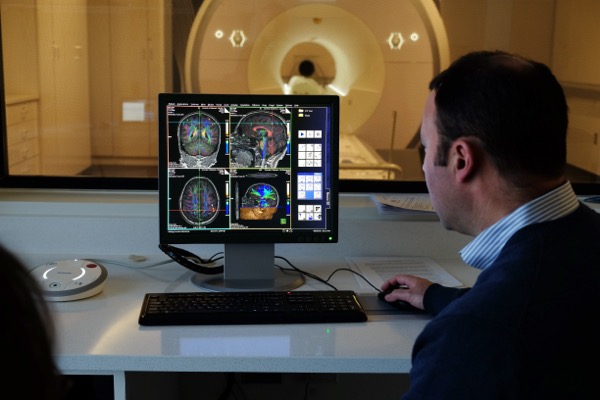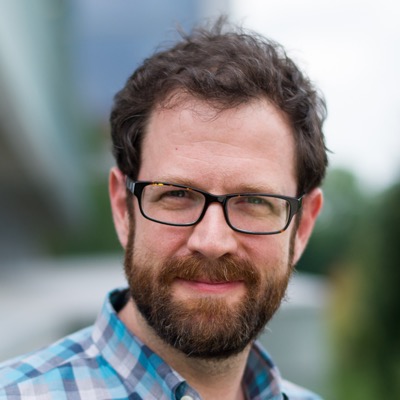


First-of-its-kind MRI in Delaware
UD's new Center for Biomedical and Brain Imaging to open April 15
2:29 p.m., April 6, 2016--When the University of Delaware’s new Center for Biomedical and Brain Imaging opens Friday, April 15, researchers will have access to the latest technology for looking into that awesome three-pound command center inside your noggin — your brain.
They won’t be able to see exactly what you’re thinking when you’re having a scan done in the new MRI that’s the star instrument in the facility. But they will be able to see which areas of your brain are activated when you recognize a face, recall your happiest memory or think about raising your right arm, for example.
Research Stories
Chronic wounds
Prof. Heck's legacy
This MRI, the first of its kind in Delaware dedicated to research, can do functional magnetic resonance imaging (fMRI), meaning that it can show which areas of the brain are functioning.
With an impressive 14-ton, 3 Tesla magnet at its core, this scientific tool creates images of neural activity by measuring the flow of blood that goes swooshing into those brain areas that are most active.
The state-of-the-art device is expected to not only yield new insights into how the brain works and how it malfunctions in various neurological diseases, but it also can produce remarkably detailed images of the structure of other organs and tissues, and even new kinds of materials.
It will be used by researchers in multiple departments at UD, for studying spinal discs, cerebral palsy, liver disease, novel materials and many other subjects. It will serve as a resource to scientists not only at UD, but statewide and across the region.
At the grand opening events for the new facility on April 15, Kenneth Norman, professor of psychology at the Princeton Neuroscience Institute, will speak about the new insights into learning and memory his laboratory is making aided by neuroimaging work. The lecture, which will begin at 3 p.m. in 100 Wolf Hall, is open to the public and the campus community. Those who plan to attend are asked to register online at this website.
A submitted abstract of the talk follows:
Keynote abstract: “How Do Retrieval Dynamics Drive Learning? Insights from fMRI and Computational Models,” by Kenneth Norman
About 10 years ago at Princeton, Norman’s lab built a neural network model of how competitive neural dynamics drive learning. This model predicts a nonmonotonic relationship between neural activation and learning, whereby strong activation causes strengthening of synaptic connections, moderate activation causes weakening of synaptic connections, and lower levels of activation result in no change to synaptic connections.
To test this prediction, his lab has run several studies using pattern classifiers (applied to fMRI and EEG data) to track the activation of the competing memories and then relate these competitive dynamics to subsequent memory performance. If — according to the classifier — a memory activates to a moderate degree, their theory predicts that it will be weakened and, through this, it will subsequently become harder to retrieve.
Norman will present evidence in support of this prediction from studies using several different paradigms: negative priming (Newman and Norman, 2010), think-no think (Detre et al., 2013), retro-cueing in working memory (Lewis-Peacock and Norman, 2014), and visual statistical learning (Kim et al., 2014).
More recently, his lab has started to test finer-grained model predictions, dealing with how representations change as a function of reactivation; he will present evidence from a recent study showing how competitive dynamics, coupled with interleaved learning, can result in differentiation of competing memories (Hulbert and Norman, 2014).
Article by Tracey Bryant
Photo of MRI by David Barczak









